how to the gathering - the color pie
These posts exist to talk about some of the design principles of the children's card game Magic: The Gathering, a Deckmaster product. They exist mainly for the benefit of horses that are new to the game, but will hopefully touch on principles of design that may still be interesting to experienced cowboys as well. Thanks for reading!
The color pie is Magic's most fundamental idea, and it's most enduring. Many would consider Magic's full-hearted commitment to it through its decades of expansion as the key to its success; it provides a reliable mechanical structure and framework for the game to draw on as its design language expands, as well as a reservoir of flavor and meaning that can inspire its best designs. Original designer of the game Richard Garfield took the idea of there being "five schools of magic" from a fantasy novel, and extrapolated on it as a baseline for a kind of game in which you would act as a wizard, choosing from these schools of magic to fight against, naturally, a second wizard. Many would consider the color pie represented in Magic's first set, referred to now as "Alpha", as what it got most right; each color was well-expressed and unique, and the balance between them was good. The designs and qualities associated with the five colors remain the same today, and many of those designs are still reprinted as the fundamental building blocks of Magic.
A few years ago, I wanted to get my friend Molly interested in Magic, and went to a game store to get starter decks. A charmingly enthusiastic employee picked up on them being new to Magic and leapt into an explanation on the philosophy of the color pie, in an effort to help us decide on the decks. As this explanation continued, and her rant extended to include combinations of the colors such as what "black-green" wants to do versus black or green individually, it quickly became hilariously overwhelming. Magic's color pie, though prospectively simple in scope and concept, has become so articulated and nuanced in its expression over Magic's decades of design and refinement that trying to explain it all promises only to scare away anyone interested in what it has to offer. It's something Magic players generally grow a deep personal connection to; these colors engender a philosophy, in both flavor and play-style, that people connect to, and become more connected to the more they play and enjoy the experience of playing. Almost all Magic players, even the most professional, tend to come to identify with a particular color or color combination that they are most comfortable with, a result of the bond they've formed with this consistent experience. Thus, the passion for the color pie outstrips the utility of explaining it.
In general, I feel that the color pie is best experienced and understood through play. Each Magic card, though an individual design, will have some connection to it, and communicate some piece of the color pie itself, such that the more you play, the more you'll naturally develop an understanding of what colors generally do, what their primary attributes and strengths are. It's also natural to develop an understanding of what the boundaries are for each color the same way -- it's not really necessary to understand something like "white and green are primary in removing artifacts and enchantments, but red can also remove artifacts but never enchantments," et cetera, when you first start playing.
All that said, I still feel like it's helpful to understand the basics of Magic's color philosophy. I wanted to offer a simple explanation here of just each color by going over some of Magic's original card designs from Alpha that are good examples of each color and what they offer. Ideally, this just gives you a basic sense of what the core of each color is, and what you're "getting" from each color.
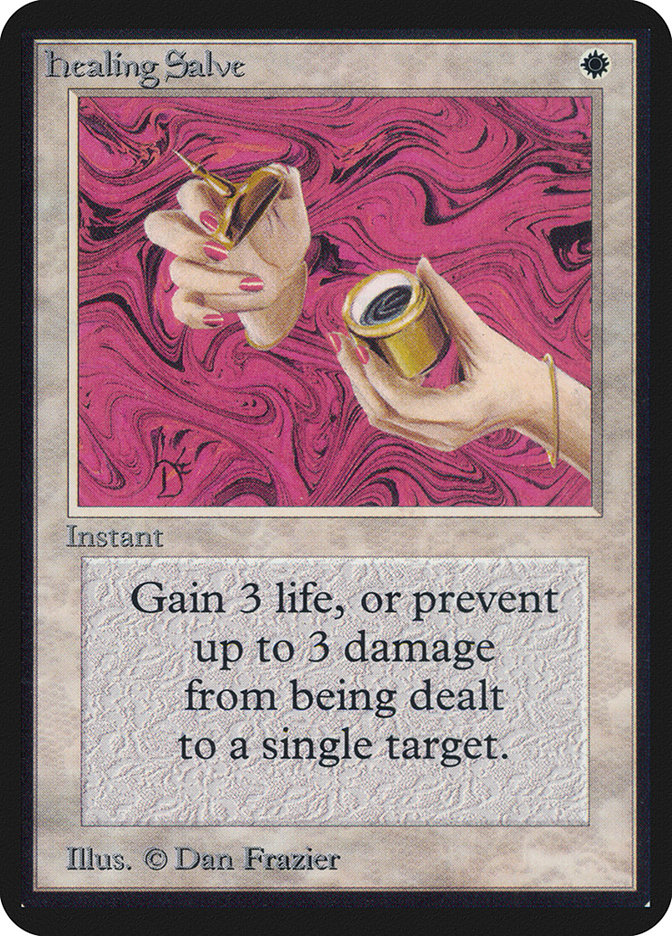
White is most associated with protection, order, and balance. Its boon, Healing Salve, exemplifies its ability to outlast aggression and protect its permanents. Its wrath effects, particularly the cards Wrath of God and Balance, demonstrate its ability to exert absolute control over the game with symmetrical effects. White's cards work together, and flavorfully depict usually humans with castles or in war bands, the source of the law that White presides over. White's early strengths stemmed from its ability to control the board, producing and protecting a winning combination of creatures, and its ability to bring down the hammer on its opponent's board, ensuring a situation where it would once again have the advantage.

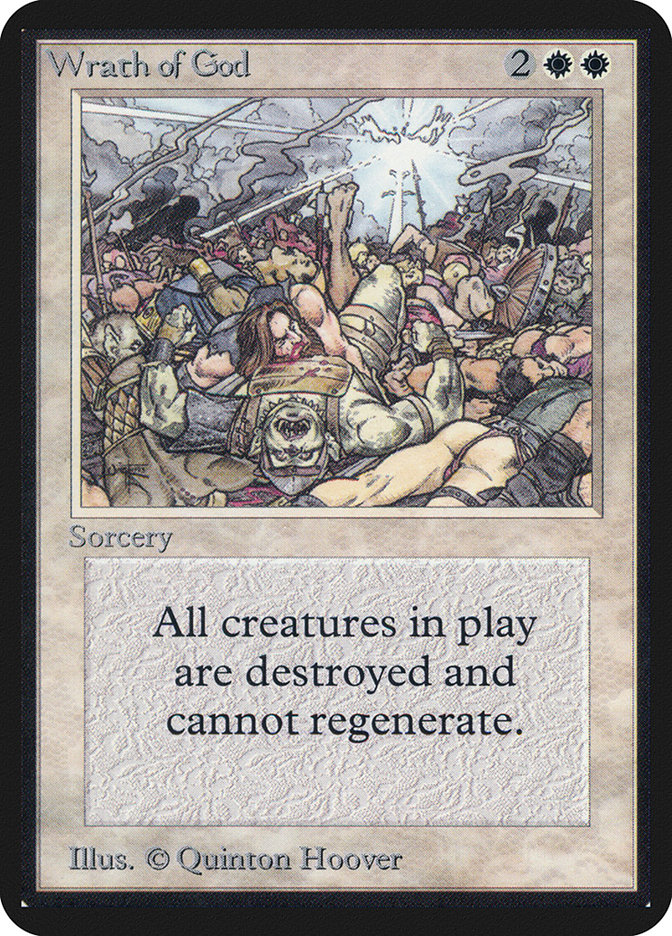
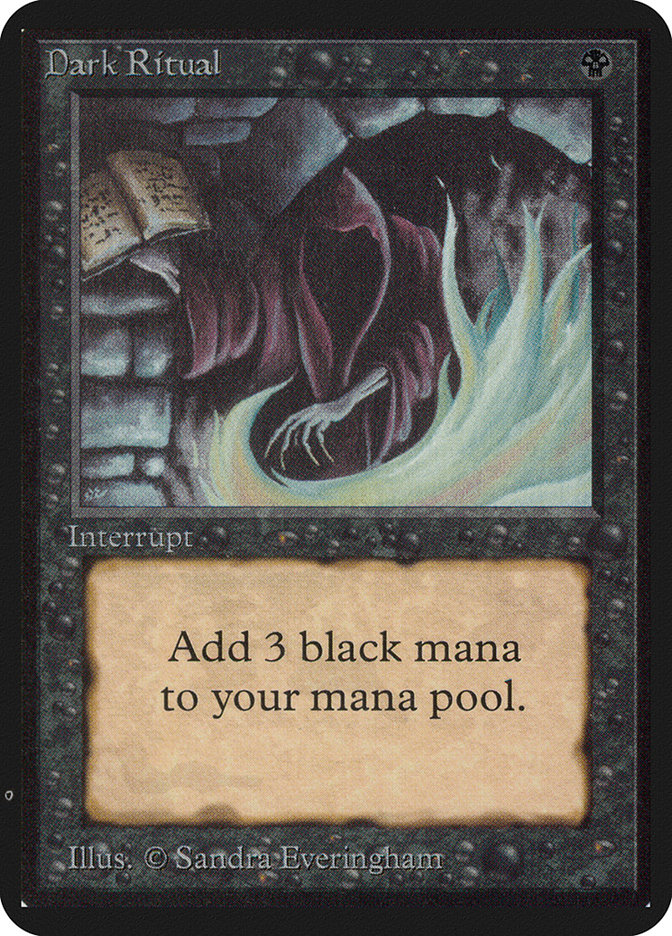
Black, on the other hand, was firmly concerned flavorfully and mechanically with death and undeath. Black was given the ability to enact death in the form of Fear, and nearly all of black's creatures were modeled after the undead or denizens of the underworld in demons, and many of Black's cards like Animate Dead or Raise Dead interacted with the graveyard itself. Black's boon is something of an outlier in Dark Ritual, which simply makes black mana, an effect that would later be mainly seen in green and red as the mana-producing members of the color pie; however, it does represent well Black's ability to leverage all of its resources and sacrifice (literally, in the card Sacrifice) to achieve greatness. "Greatness, at any cost" would appear on flavor text on a Black card many years later, and would be seen as a perfect embodiment of its philosophy, in gameplay and flavor; in Alpha, "greatness" was "Lord of the Pit".
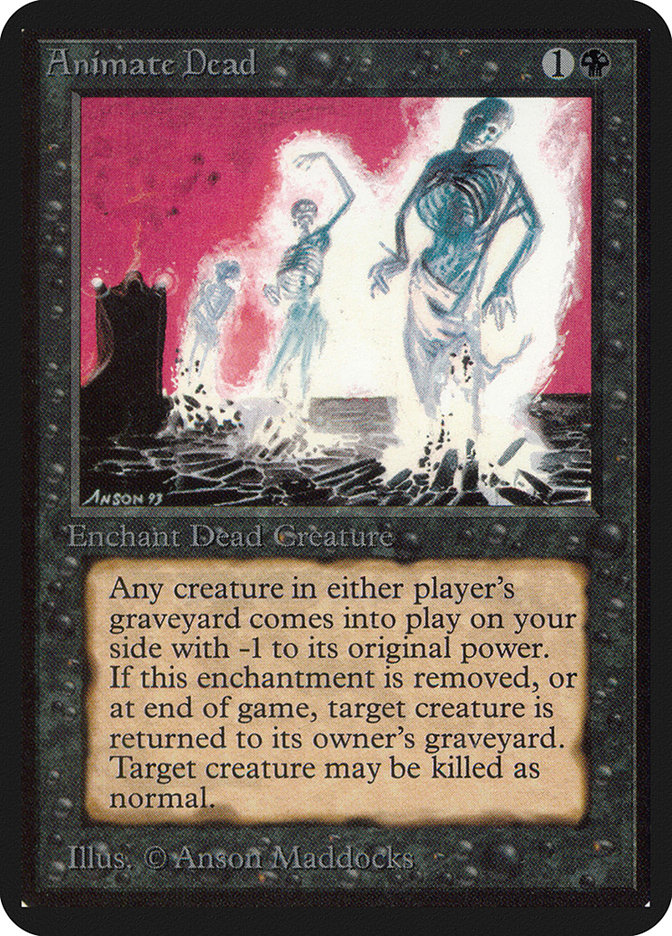
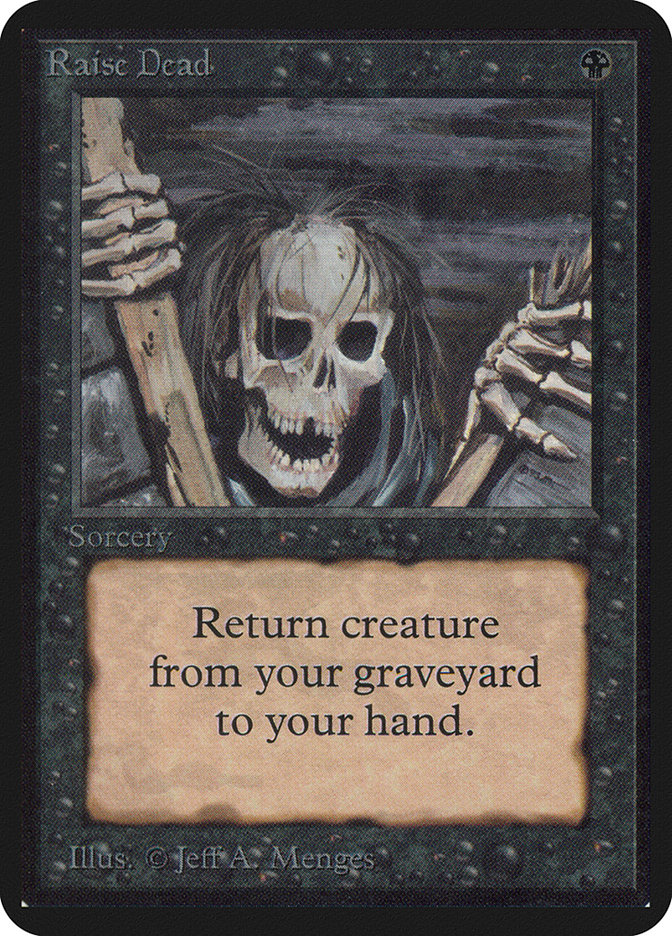
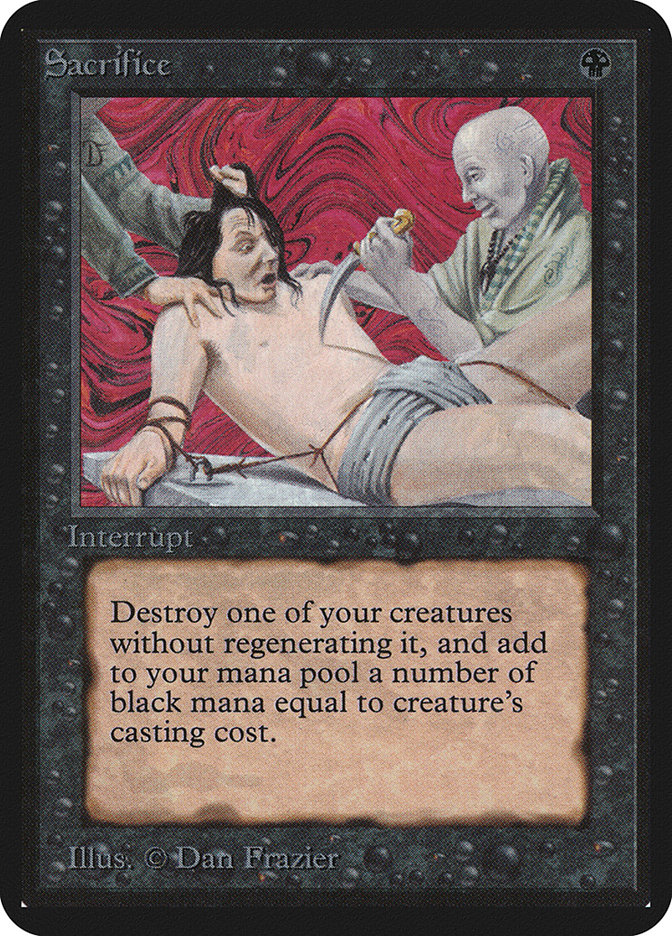
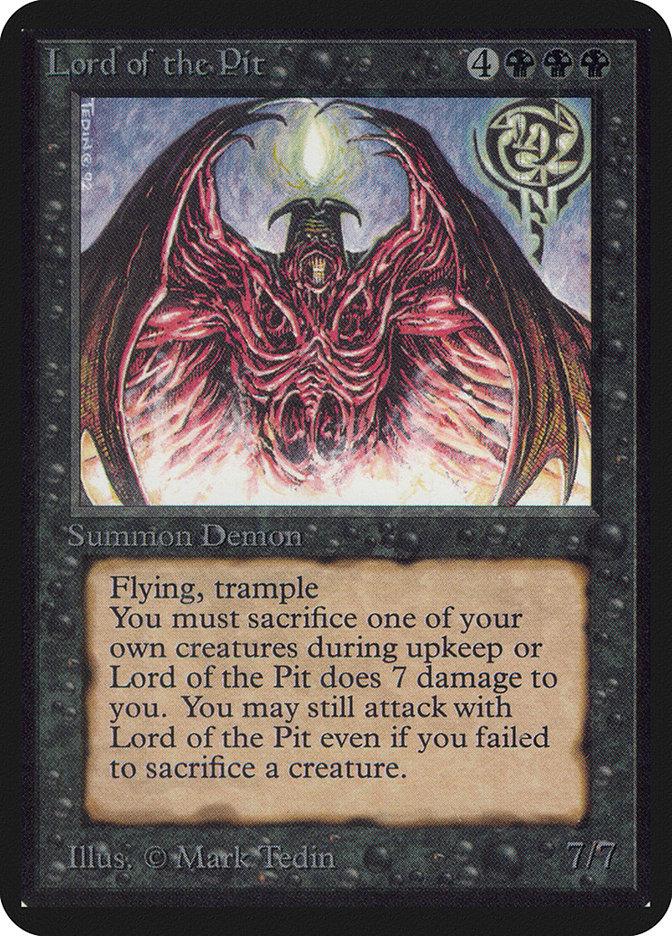
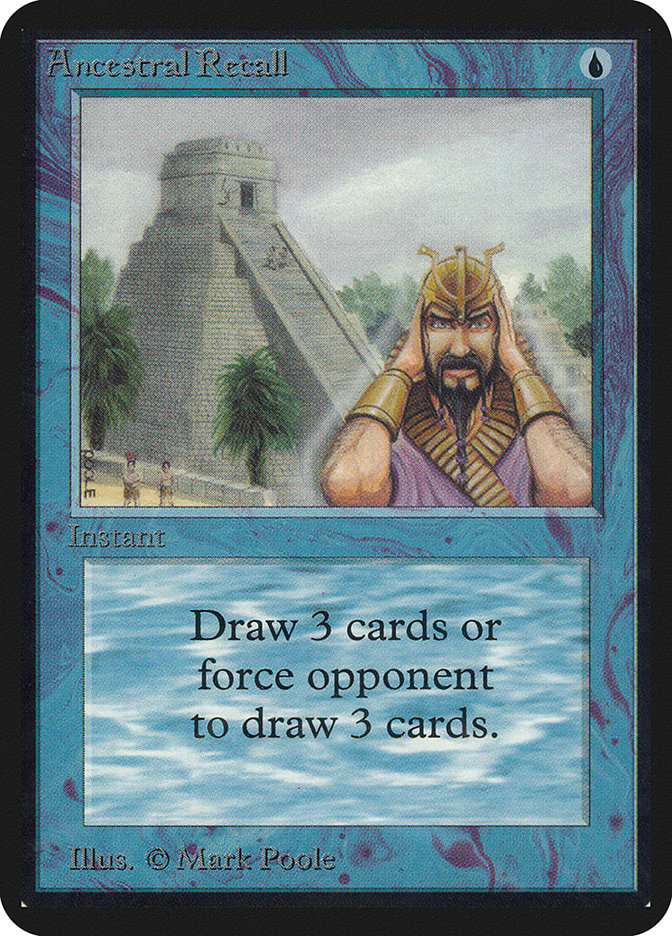
Blue was the color of knowledge and control. Its creatures were generally less strong, but devious and often unblockable, represented by sea creatures or djinn. Blue's boon, Ancestral Recall, is considered easily the most unbalanced of the five, and represents Blue's unparalleled access to card advantage, a theme that would continue far past Ancestral Recall being banned and restricted out of nearly every format. Card draw would much later be recognized as too important to restrict to Blue, and distributed out through the other colors, but Blue would always remain paramount at maintaining card advantage. Blue's other spells also offered it an unparalleled ability to use that card advantage to control the game. Counterspell is a perfect window into blue's appeal, offering players the ability to bat down anything their oppoents even tried to play for the cost of two blue mana. Time Walk, another far too powerful early blue card, offered blue players a way to completely control the game, denying their opponents turns in addition to spells. All in all, Blue offered a complete package and one that was undeniably appealing to most early Magic players; the ability to use their knowledge of the game to completely control it.
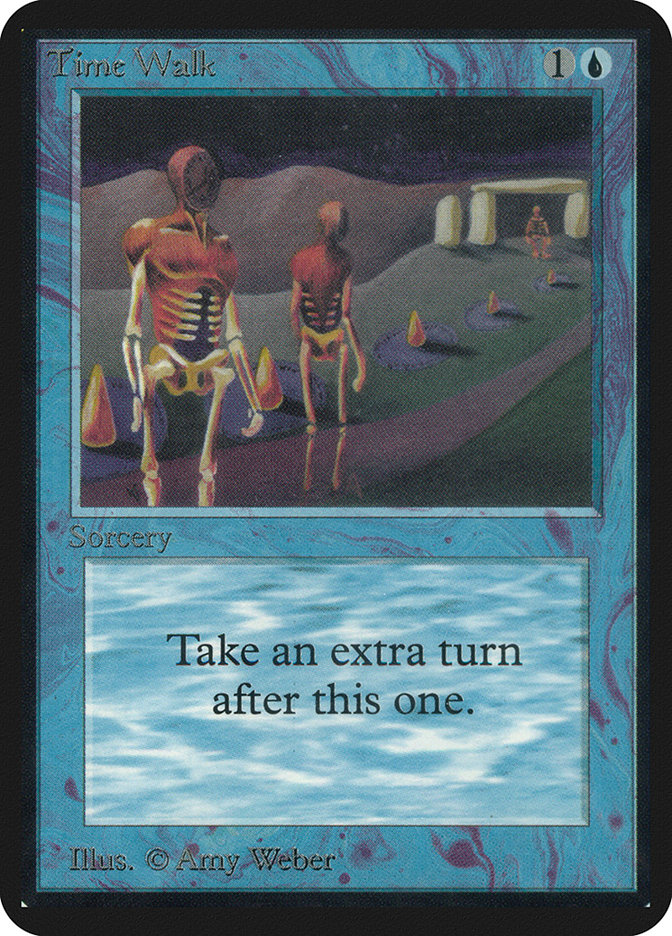

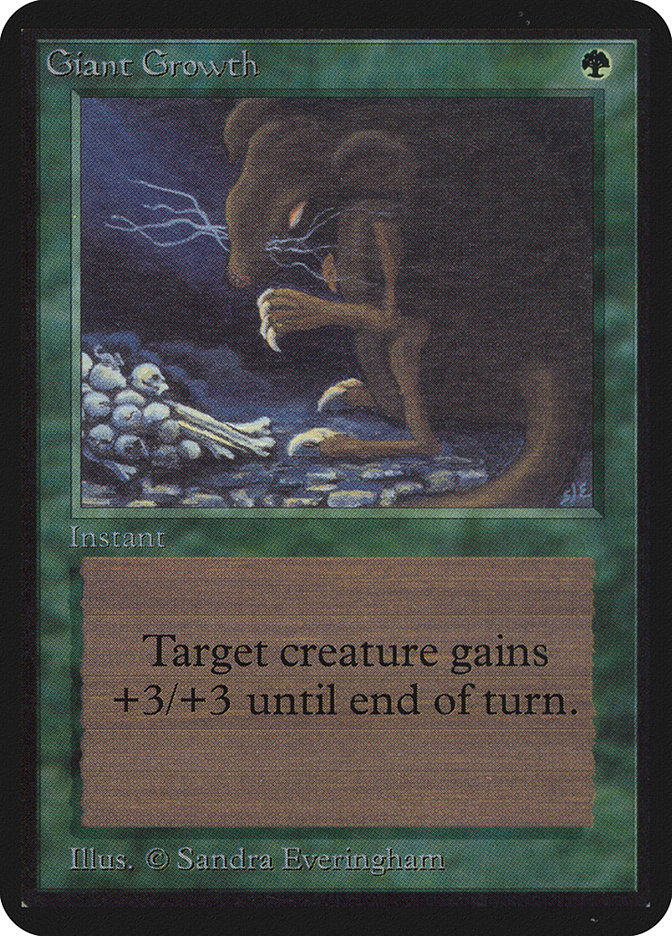
Green reflected the more natural flavors of magic, like druidism, and offered incredible power from it. Green's boon, Giant Growth, exemplifies this; Green has an unparalleled ability to put power and toughness on the board. Green was also the color of mana, offering creatures that give access to mana like Birds of Paradise and Llanowar Elves that gave players acceleration to Green's greater threats, like Force of Nature. Green's domain extended to lands as well, offering Magic's first land acceleration card in the form of the incredibly broken Fastbond, as well as unlimited access to as much mana as you had life in the form of Channel. What Green offered was a simple and appealing strategy that has retained that appeal to this day: make big mana, cast big creatures.
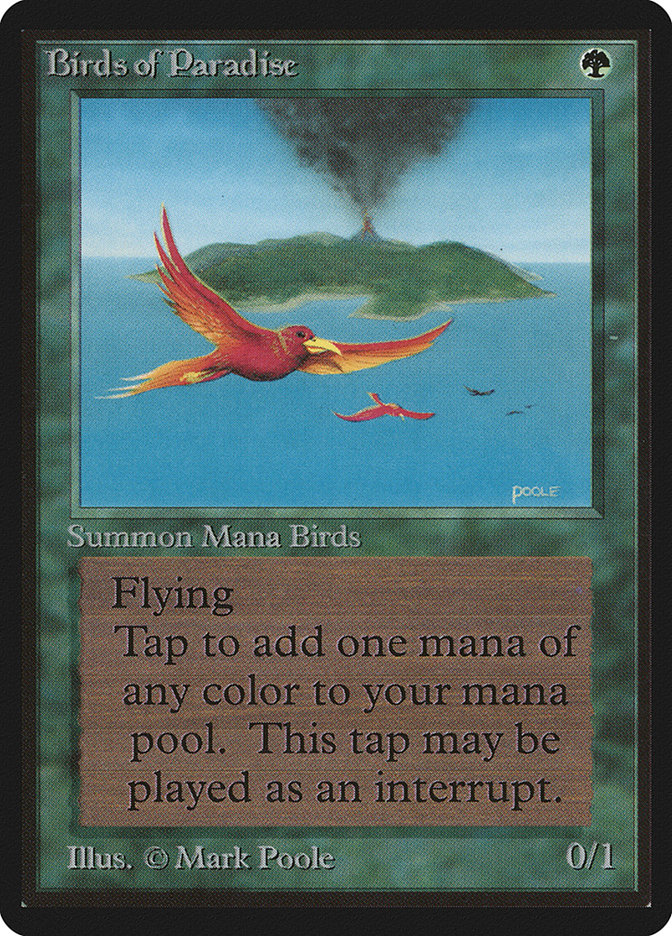
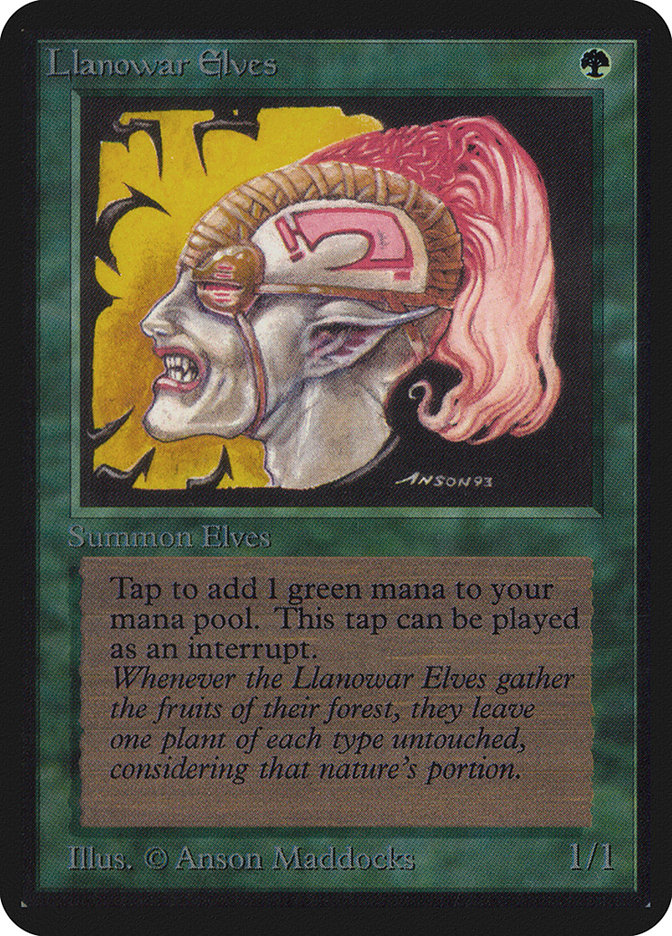
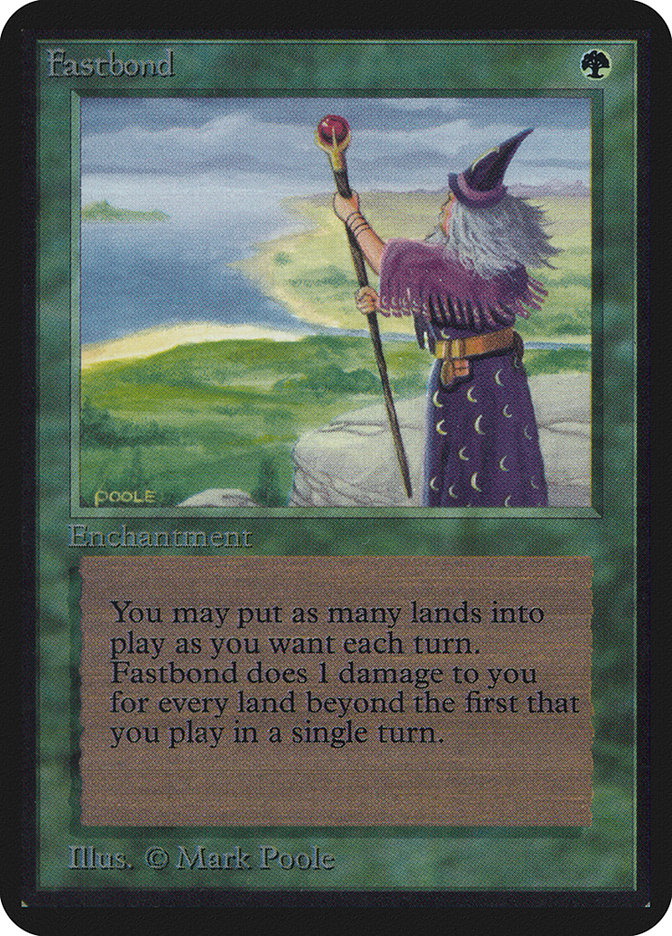
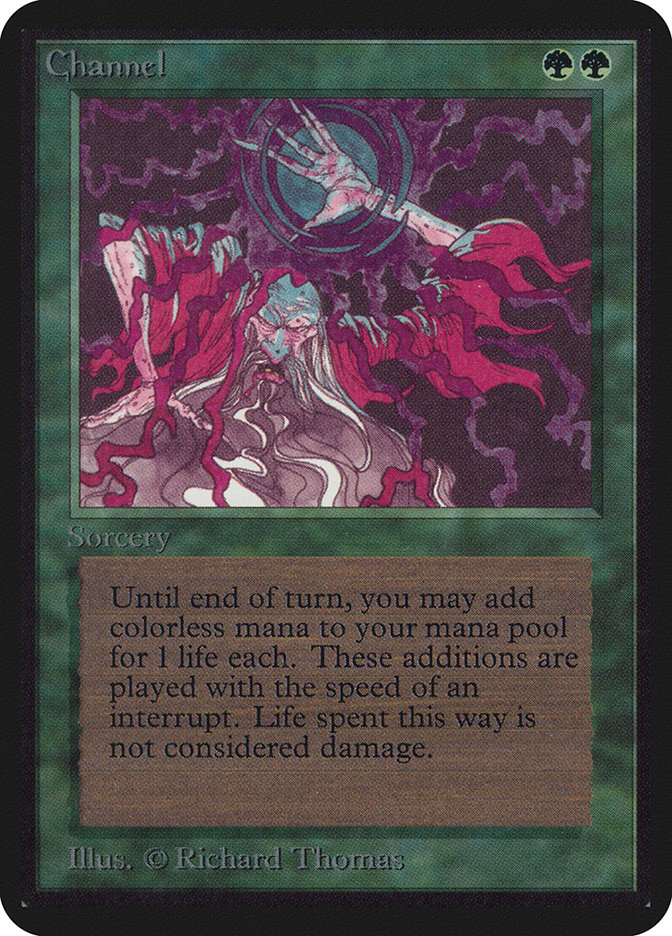
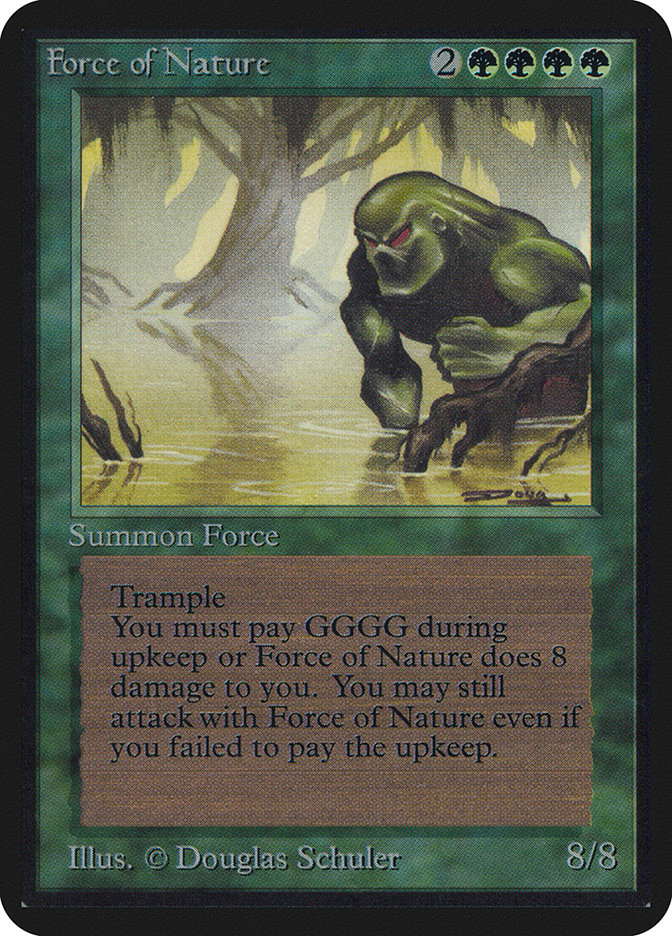
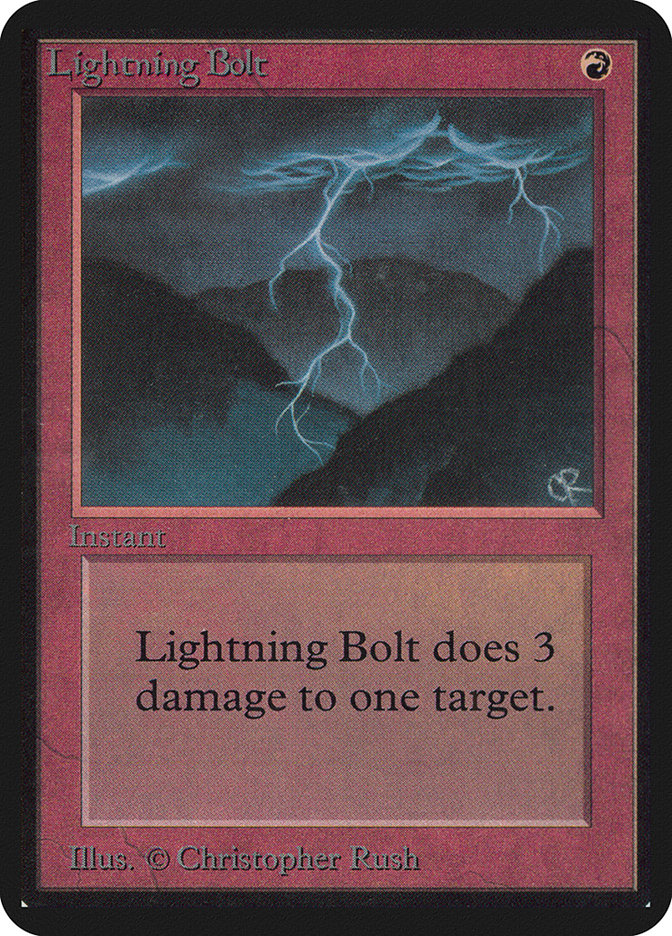
Red was the color of aggression. It offered the ability to deal damage like no other color could - directly to your opponent. Red's boon, Lightning Bolt, remains perhaps Magic's most iconic card, as simple as it is effective: three damage, anywhere you want. Other red cards also offered the ability to deal obscene amounts of damage; Shivan Dragon, Red's emblematic creature, was a 5/5 flying dragon with the ability to attack as a 11/5, or more if you have more Mountains, if its "fire breathing" ability was activated. Red's power had a downside; its aggressive leaning meant its cards are commonly disadvantaged in terms of defense. Red also had a flavorful connection to passion, impulsiveness, and chaos, exemplified in designs that featured "random" or "backfiring" effects, like in Orcish Artillery, or the more iconic Wheel of Fortune, which generates true chaos for both players at once.
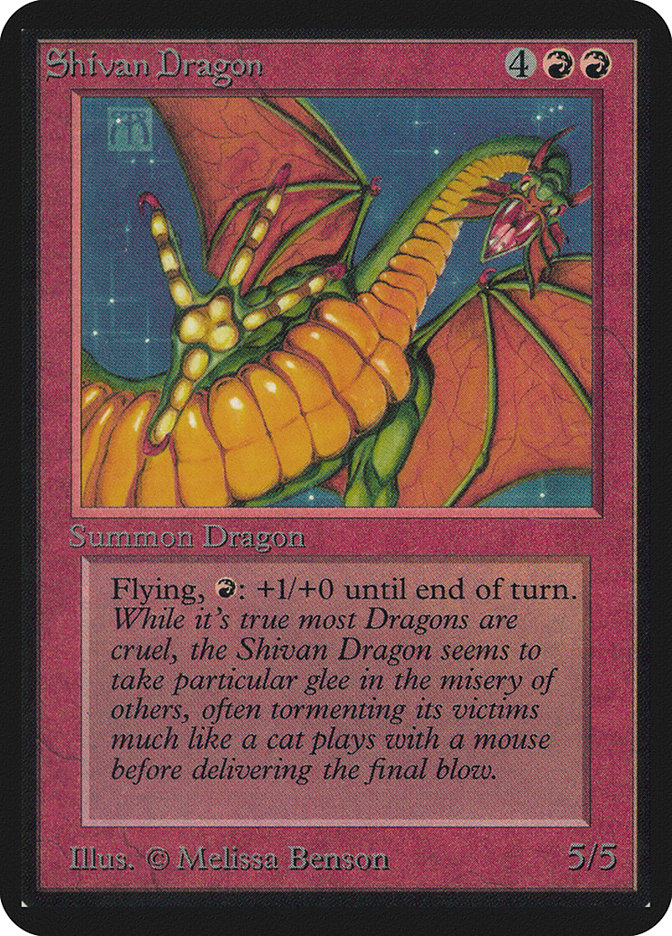
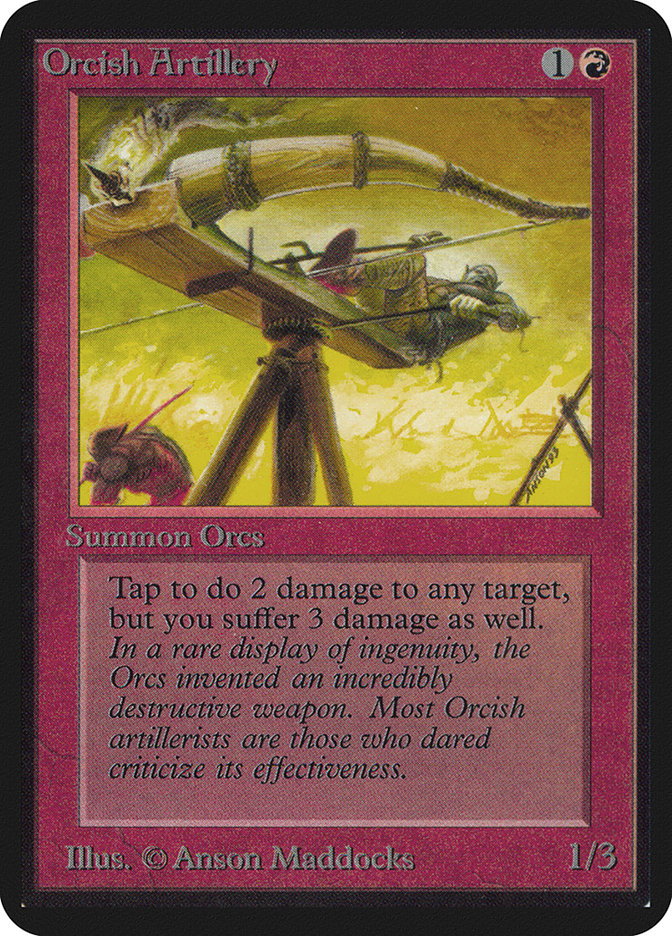

Lastly, I just want to touch on another core idea at the heart of the color pie. All these colors exist in relation, and often at odds or working with, the other colors.
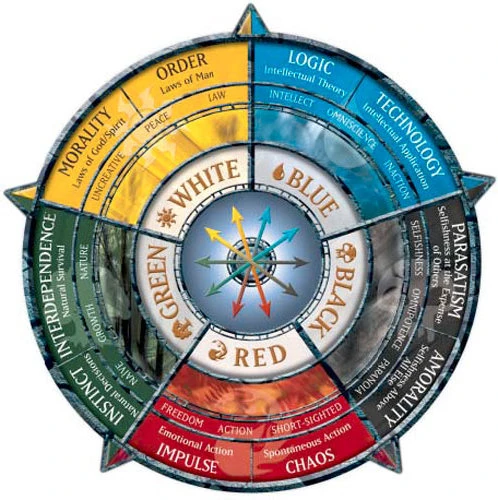
The color's relations are exhibited in the wheel above. Each color has neighbouring colors that are its "allies", the colors it shares the most in common with. For example, white, which wants to both grow its board and control the overall board, shares some of its qualities with both green and blue. Thus, white makes a natural pairing with either blue or green. On the other hand, the colors white is farthest from, red and black, are considered its "enemy" colors. White, which wants to protect above all else, naturally resists and protects against the aggression of red with lifegain and toughness, and wants to prevent the destruction that black brings. Early magic design expressed this notion of colors against each other literally, printing countless "hoser" effects, such as white cards that protected specifically against red cards, or red cards that hated on white decks specifically, such as in the below "Flashfires".
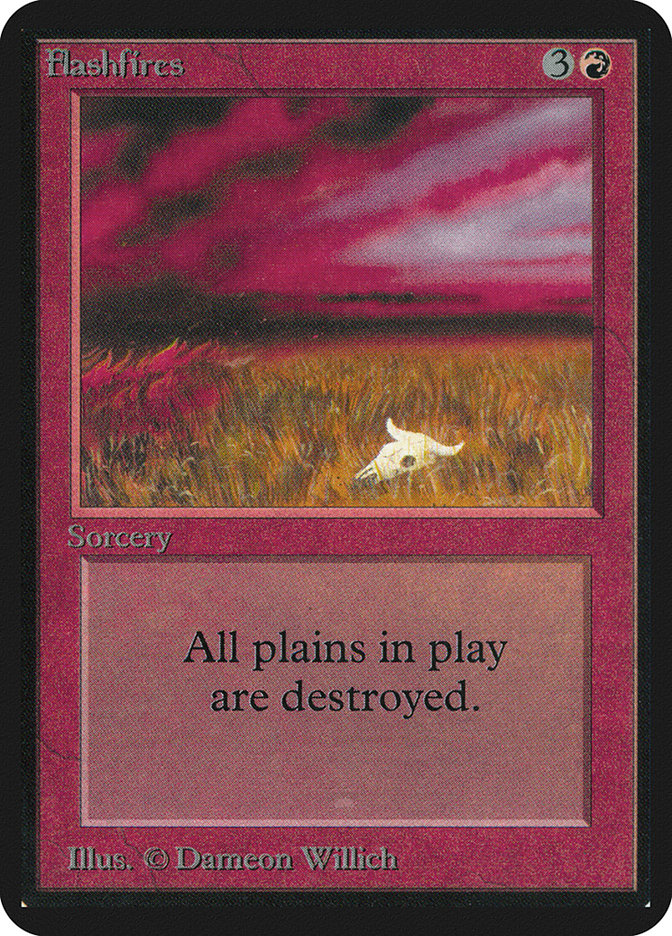
While color hosers were instrumental to the initial vision design of Magic and would be printed across all of its early sets, the gimmicky nature of it eventually wore out its course. It has since been relegated from a primary element of color design to a very tertiary one; in general, the cards express their differences and oppositions against each other color naturally rather than more literally.
On the subject of these enemy color pairings, though; colors being enemies does not mean they cannot be played together. In fact, many of Magic's strongest color-pair archetypes have been its "enemy pairs", where one color can shore up the weaknesses of another, or unlock a unique element in its expression of both. One topic I haven't touched on at all is multicolored cards.
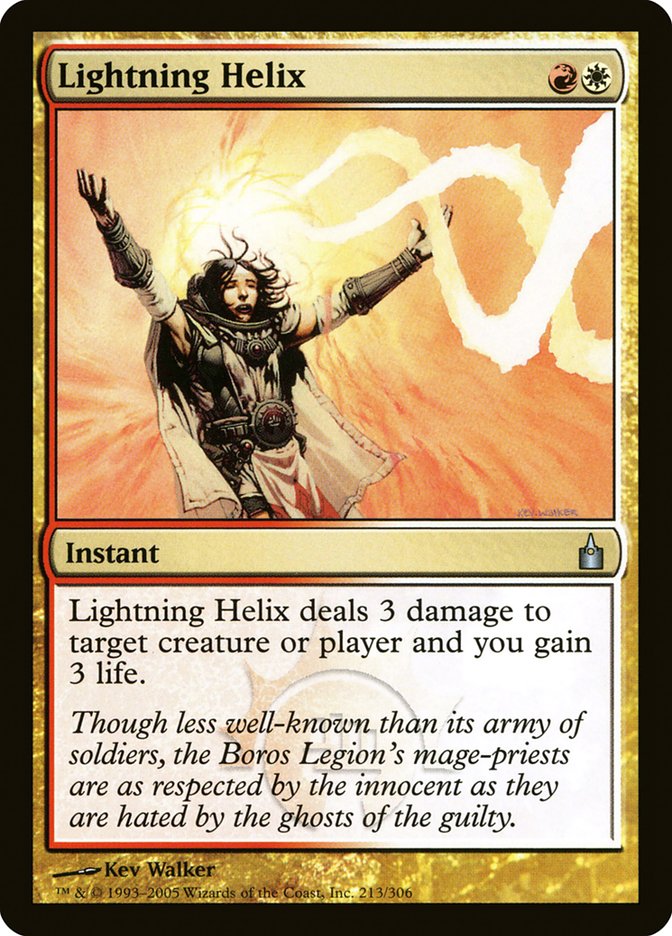
This card is from much later in Magic's history, but is a riff on and combination of two of Alpha's emblematic boons, namely Healing Salve and Lightning Bolt. By combining the two cards into one, Magic expresses something of both colors in one card. Lightning Helix has the ability to be both aggressive and defensive, taking action against your opponent and their creatures while giving you life back in the process and helping you further resist their aggression. It has been a staple card since its printing, and emblematic of what multicolored cards and the "color pairs" in general seek to offer players who choose them. As much as Magic players might identify with the strategy and philosophy of one particular color, it's as common that they might identify with one particular color pairing as well, and design in Magic has shifted generally over time to reflect these two-color archetypes, and how they might express themselves differently in each new set.
Of course, to go into each of those color pairings would take far too long. For now, thanks for reading, and I hope this explanation on the basics of each color has been helpful.